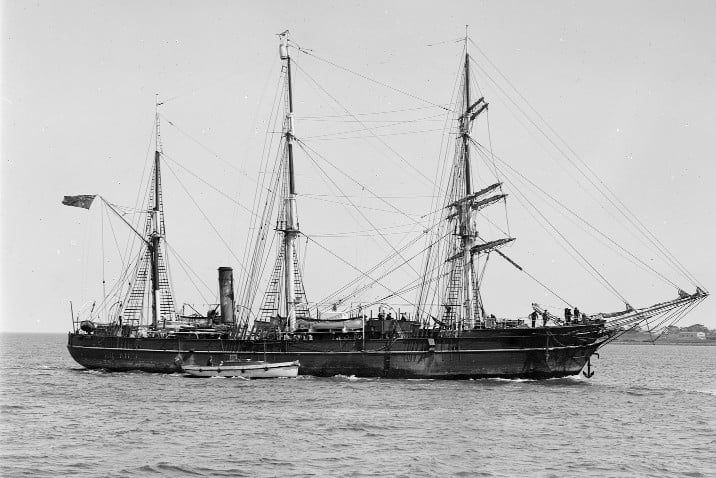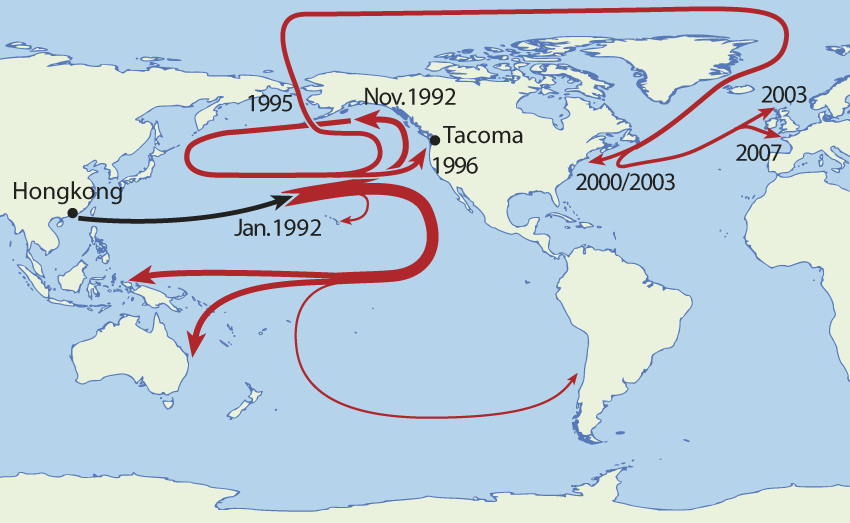There is always a romance to a bottle washed up on a lonely shore, discovered after roaming the seas, sometimes for years, containing a message from the past and from far away.
This may be a message of greeting, of despair, for science or sometimes a hoax.
From the times of Ancient Greece, items were cast into the sea to try to understand the whims and movement of vast unknown oceans. This became a common practice during the explorations of the world in the 19th century.
James Clark Ross, who, in an epic expedition between 1839 and 1843, sailed his ships further south than any before him, cast bottles overboard to track ocean currents.
On 3 April 1842, rounding Cape Horn, Ross launched five bottles of different weights into the waves, in the hope that whatever shores they were carried to, would help unravel the mysterious ways of the oceans. The lightest washed ashore at Cape Liptrap (near the most southerly point of the Australian mainland) to be found by a beachcomber in September 1845.

In January 1933 a bottle was picked up on Cudgera Beach, northern New South Wales. It contained the following message.
‘This bottle was thrown overboard from SY Discovery (Captain K. N. Mackenzie), in latitude 39 degrees 101/2 minutes south, and longitude 150. degree^ 43 minutes east, at 01.56 Greenwich mean time on April 21. 1931. The finder is requested to post this paper to the Meteorological Office, Air Ministry, LondonW.C.2. The cost of postage will be returned to the finder. The finder also is requested to note hereon the ‘time, date, and exact position at which the bottle was found.’ 1
SY Discovery was famously the ship that transported Robert Scott to the Antarctic in 1901. In 1931 the ship was returning to England after completing Douglas Mawson’s reconnaissance of Australia’s Antarctic land claim (based on Mawson’s own extraordinary explorations of 1911-1914). The details were completed and the form returned to the Admiralty.

Discovery H91.108/3056
Bottles containing hoax messages were also set upon the waters. The Sydney Sun was particularly unimpressed
Considering the number of shipwrecks, nearly everyone is interested in “A Message from the Sea.” mostly bottle messages prove to be hoaxes, and the outcome of some idiotic joke perpetrated by a pin-head, whose cerebral matter would hardly cover a sixpence 2
In August 1943 a motor launch with three friends aboard set off from La Perouse, Sydney, heading south to Port Kembla. They were caught in heavy seas and subsequent searches were unsuccessful.
Six months later a sealed jar was washed up on Avoca Beach near Gosford. It contained messages from the three men. They had been lost for 5 days when they wrote the messages. Contained was a brief will and desperate words for loved ones.
In part Harold Douglas wrote
I got blown out to sea Sunday. Engine trouble. Well, my darlings, it would only give you grief and pain for you to see all I went through. Had no water to drink, no food to eat, and it is now five days out.
George Broadley wrote:
My darling daughter. I am writing this note for you all . . . By the time you receive it you must know what happened.
Water had seeped into the jar and the note from John Bell was illegible. No trace of the men, beyond the notes in the jar, was ever found. 3
The mystery of the tides is still being unravelled. On 10 January 1992, in the North Pacific, south west of the Aleutian Islands, a container of rubber ducks and other bath toys went overboard. The rubber ducks, nicknamed Friendly Floatees, were tracked by retired oceanographer Curtis Ebbesmayer who received information from beachcombing enthusiasts across the world.

Some of the 28,800 bath toys travelled 27,000 kilometres. While the vast numbers gave scientists a lot of data on the vagaries of ocean currents, the plastic toys were also an example of widespread plastics and rubbish pollution in the world’s oceans.
For the full story see Moby Duck by Donovan Hohn available both in print and as an ebook.
More to explore
- Document in bottle The West Australian 19 January 1933 p. 8.
- Message in a bottle The Sun 13 February 1914, p. 8
- Last message in jar The Sydney Morning Herald 22 March 1943 p. 7

